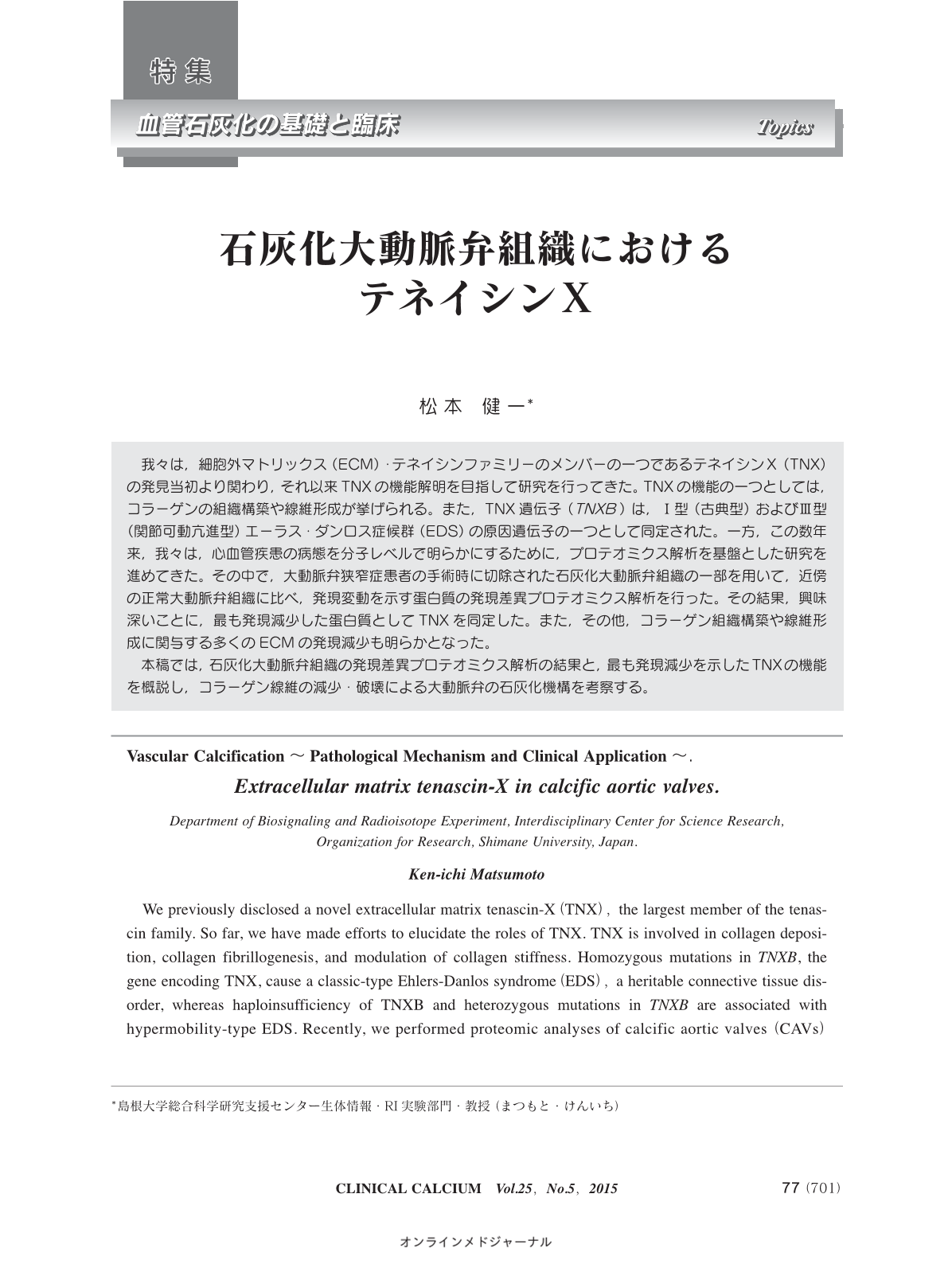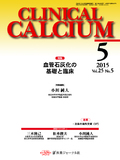Japanese
English
- 有料閲覧
- Abstract 文献概要
- 1ページ目 Look Inside
- 参考文献 Reference
我々は,細胞外マトリックス(ECM)・テネイシンファミリーのメンバーの一つであるテネイシンX(TNX)の発見当初より関わり,それ以来TNXの機能解明を目指して研究を行ってきた。TNXの機能の一つとしては,コラーゲンの組織構築や線維形成が挙げられる。また,TNX遺伝子(TNXB)は, I 型(古典型)および III 型(関節可動亢進型)エーラス・ダンロス症候群(EDS)の原因遺伝子の一つとして同定された。一方,この数年来,我々は,心血管疾患の病態を分子レベルで明らかにするために,プロテオミクス解析を基盤とした研究を進めてきた。その中で,大動脈弁狭窄症患者の手術時に切除された石灰化大動脈弁組織の一部を用いて,近傍の正常大動脈弁組織に比べ,発現変動を示す蛋白質の発現差異プロテオミクス解析を行った。その結果,興味深いことに,最も発現減少した蛋白質としてTNXを同定した。また,その他,コラーゲン組織構築や線維形成に関与する多くのECMの発現減少も明らかとなった。 本稿では,石灰化大動脈弁組織の発現差異プロテオミクス解析の結果と,最も発現減少を示したTNXの機能を概説し,コラーゲン線維の減少・破壊による大動脈弁の石灰化機構を考察する。
We previously disclosed a novel extracellular matrix tenascin-X(TNX),the largest member of the tenascin family. So far, we have made efforts to elucidate the roles of TNX. TNX is involved in collagen deposition, collagen fibrillogenesis, and modulation of collagen stiffness. Homozygous mutations in TNXB, the gene encoding TNX, cause a classic-type Ehlers-Danlos syndrome(EDS),a heritable connective tissue disorder, whereas haploinsufficiency of TNXB and heterozygous mutations in TNXB are associated with hypermobility-type EDS. Recently, we performed proteomic analyses of calcific aortic valves(CAVs)compared with relatively adjacent normal tissues to understand the underlying molecular mechanisms of dystrophic valvular calcification. Interestingly, we found that TNX was the protein with the greatest decrease in expression among the differentially expressed proteins and that expression levels of proteins modulating collagen structure and function, such as type I collagen and decorin, were also decreased in CAVs. In this review, I will discuss about the decreased level of collagen due to the reduction of expression levels of proteins that play regulatory roles in collagen functions such as fibril organization and fibrillogenesis in CAVs.



